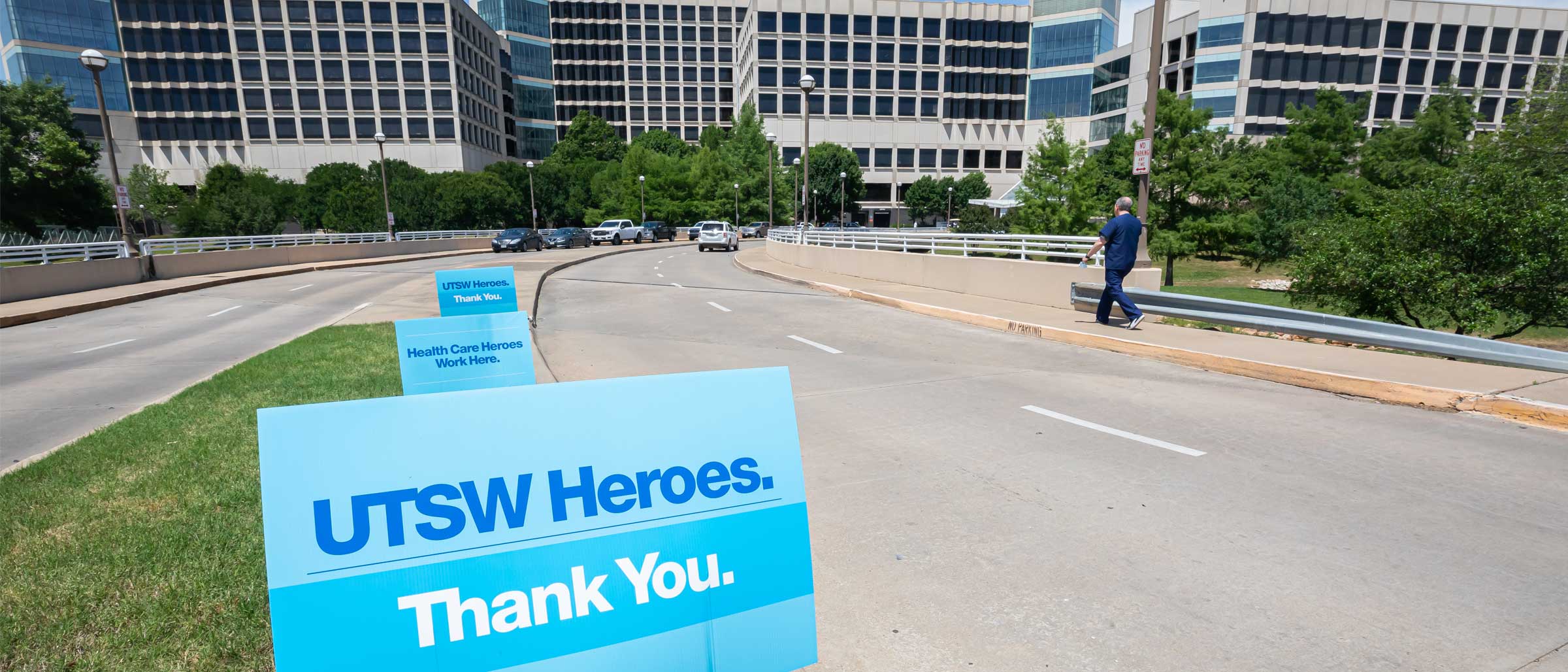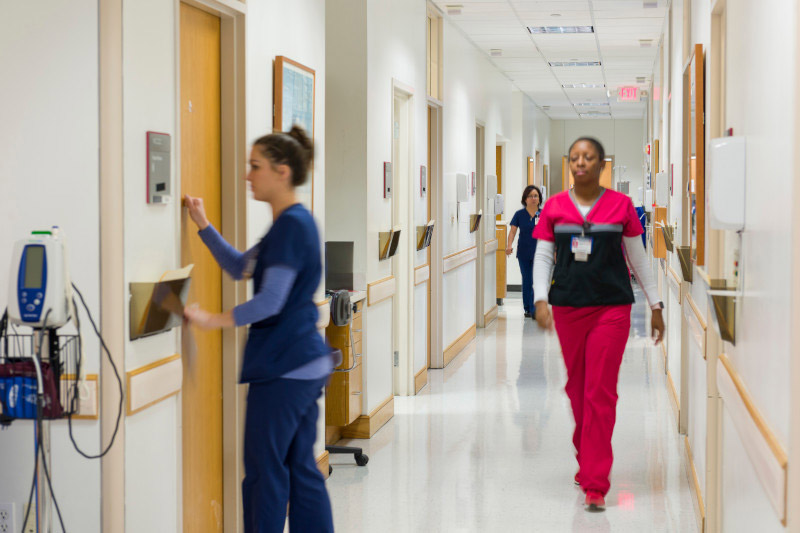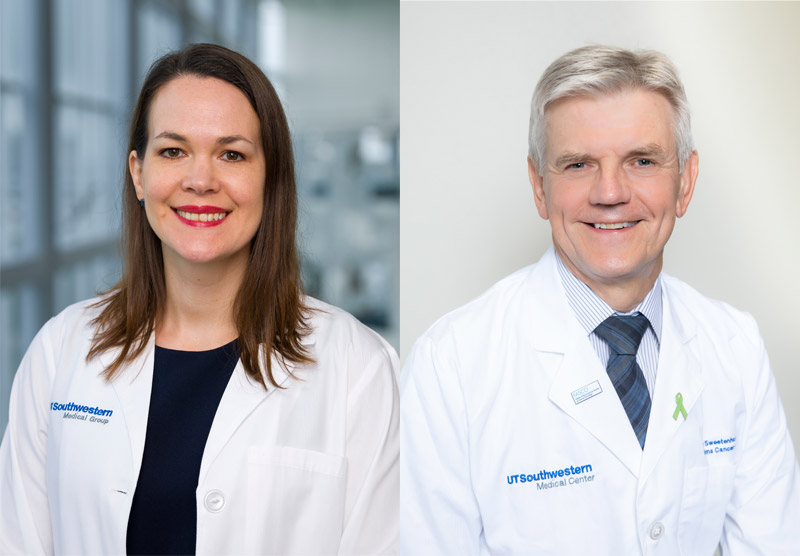Cancer treatment can't be put on hold during COVID-19

When it comes to cancer, timing is key. Delays in diagnosis or treatment can potentially be harmful to the patient. That’s why UT Southwestern’s Harold C. Simmons Comprehensive Cancer Center has put in place a range of guidelines to help patients and caregivers be safe and feel comfortable when seeking help during the COVID-19 pandemic.
“Cancer clinics must be even more stringent than other departments because our patients are much more vulnerable. Their immune systems are impaired from either the disease (cancer) or its treatments,” said Dr. John Sweetenham, Associate Director for Clinical Affairs. “These patients have a three to four times higher risk of ICU admission and death from COVID than the general population.”
To reduce the risk of exposure, most patients receiving infusions at the Simmons Cancer Center’s three locations in Dallas, Richardson, and Fort Worth are treated in private rooms. Community areas have been reorganized to increase the number of available private rooms and increase social distancing. Telehealth appointments are being used frequently so patients keep up with their regular doctor visits.

The careful process begins even before the patient’s appointment, with an online screening questionnaire regarding any recent symptoms, contact with others, and travel. Most patients are asked to come alone, without a caregiver, to lower the number of people in the centers and reduce the risk of exposure of patients and staff. If having company is very important to the patient, their caregiver can wait in an assigned area and use a cellphone to connect to their loved one. Even this rule has a few exceptions.
“Cancer patients are often older. Some are hard of hearing or deaf, some have dementia, and some have difficulties walking. There are communication barriers and physical ones. We accommodate all of our patients,” said Dr. Suzanne Cole, Medical Director of the Cancer Center at UT Southwestern Medical Center Richardson/Plano.

When arriving for appointments, patients must put on a mask if they are not already wearing one, and have their temperature checked. Clinical staff wear personal protective equipment (PPE) that is changed regularly. Waiting rooms have fewer chairs spaced further apart.
In all the clinics, each chair is cleaned between every patient visit, along with frequent cleanings of common areas and high-touch surfaces like elevator buttons and door handles. Hand sanitizer is widely available throughout the clinics.
Telehealth
For some patients requiring follow-up appointments, telehealth has been the answer. In March and April, when the COVID pandemic took hold in Dallas, Dr. Cole, Assistant Professor of Internal Medicine, hematologist, and medical oncologist, began seeing nearly all of her patients via telehealth, even when they are in the next room, to reduce the number of people who could potentially be exposed. The change was implemented after a walk-in patient revealed he had just returned from a two-week Caribbean cruise after he had already interacted with clinic staff. A few days later, he tested positive for COVID-19, and one nurse was quarantined for two weeks as a result. The incident prompted stricter guidelines to be put in place in the spring.
The danger of infecting health care workers threatens the continuity of care for everyone, Dr. Cole explained. “We have a small team of just 20 people. If several of us were quarantined, we’d have to shut down chemotherapy treatments for 14 days for everyone.”
During the pandemic, up to 65 percent of patient visits have been telehealth. Cancer clinic leaders hope that about one-third of their patients will continue to use telehealth for their appointments even after the threat of COVID-19 has diminished.
Early detection and prevention
According to the most recent figures from the National Cancer Institute, an estimated 1,735,350 new cases of cancer were diagnosed in the United States in 2018. Some cancers can be treated more successfully or removed if diagnosed early, such as cervical, skin, colon, and breast cancer. Cancer Center leaders worry that some patients may put off seeing their primary care physician to report a lump, spot, or digestive symptom due to their fear of contracting COVID-19.
“The number of newly diagnosed cancer patients seen at the Cancer Center dropped by almost half in the month of April. Will we look back and say that the impact of the pandemic was significant for cancer patients?” asked Dr. Sweetenham. “We won’t be able to answer that question for two or three years.”
Another innovation taking place during the COVID-19 pandemic is the opening of an acute care clinic exclusively for cancer patients who are currently in treatment. Instead of going to the emergency room after hours with side effects from chemotherapy (such as nausea and dehydration), cancer patients are now able to use an acute care facility at the Simmons Cancer Center. The new facility opened Aug. 4.
Even with new COVID-19 guidelines, an acute care facility, and telehealth appointments, Simmons Cancer Center leaders are concerned that the pandemic could lead to a backlog of cancer cases.
“We will need to keep a very close eye on new cancer patients throughout this year,” said Dr. Sweetenham, Professor of Internal Medicine, hematologist, and medical oncologist.
Dr. Cole agrees that the situation will need constant monitoring. “I worry about a possible surge of cancer patients this summer or fall. We can’t allow COVID fears to delay a cancer diagnosis or a course of treatment for a patient.”

